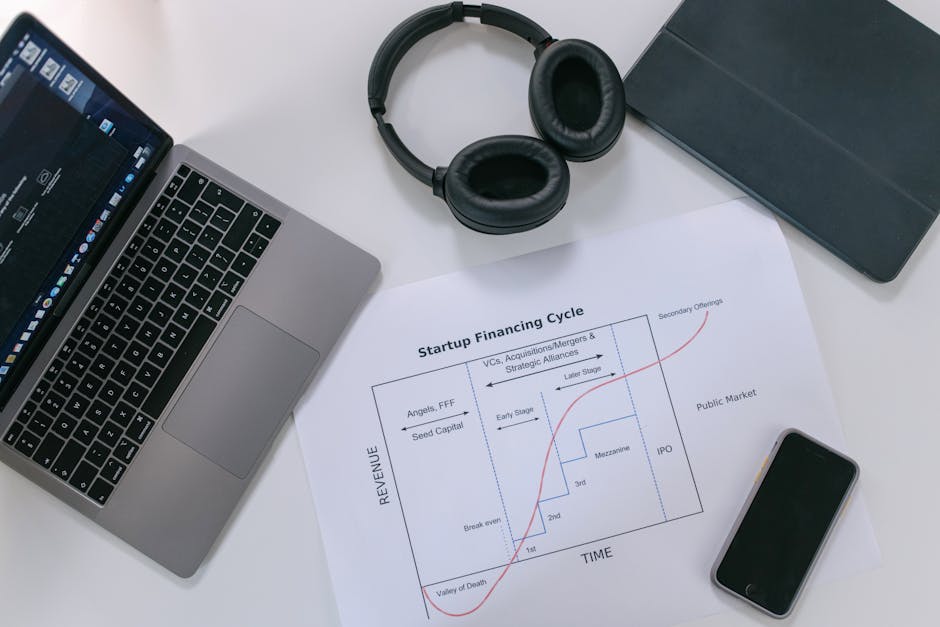Measuring the Success of Agile Projects
You’re tasked with measuring the success of your agile project, which means defining what success looks like and consistently tracking progress towards it. Start by identifying key performance indicators, such as velocity and cycle time, to understand your team’s workflow and optimise it. Don’t forget to gauge customer satisfaction and track financial metrics to justify your investment. But that’s just the starting point. As you dive deeper, you’ll uncover more nuances to measuring agile project success – from stakeholder buy-in to team morale, and from ROI to business value. Want to know the secrets to nailing it?
Key Takeaways
• Defining success metrics is crucial to measuring progress and achieving desired outcomes in agile projects.• Tracking velocity and cycle time helps identify bottlenecks, optimise workflow, and refine sprint planning.• Measuring team performance indicators, such as morale and skills, helps refine processes, boost morale, and deliver high-quality products.• Customer satisfaction, measured through feedback loops and surveys, is the ultimate benchmark of an agile team’s success.• Measuring agile ROI and business value through financial metrics, such as cost-benefit analysis, justifies the investment and demonstrates tangible results.
Defining Agile Project Success Metrics

As you undertake an agile project, defining success metrics becomes crucial to measuring progress and achieving desired outcomes. You can’t just wing it and expect to land on your feet; you need a clear understanding of what success looks like.
This is where agile readiness comes in – it’s about being prepared to adapt and respond to changes as they arise. But, you can’t do it alone. You need stakeholder buy-in to confirm everyone’s on the same page.
So, what metrics should you track? Start by identifying the project’s objectives and key results. What’re the must-haves, nice-to-haves, and nice-to-have-but-not-essential features? What’re the acceptance criteria for each deliverable?
By defining these metrics, you’ll be able to measure progress and adjust your approach as needed. Remember, agile is all about iteration and continuous improvement.
When defining success metrics, consider both quantitative and qualitative measures. Quantitative metrics might include cycle time, lead time, or defect density. Qualitative metrics, on the other hand, might include user satisfaction, team morale, or stakeholder feedback.
Tracking Velocity and Cycle Time

You’ll get a better grip on your project’s rhythm by tracking velocity and cycle time, two metrics that reveal how efficiently your team is delivering working software.
Velocity measures the amount of work your team can complete during a sprint, giving you insight into your team’s capacity. Cycle time, on the other hand, tracks the time it takes for a task to move from ‘in progress’ to ‘done.’
By monitoring these metrics, you’ll identify bottlenecks, optimise your workflow, and make data-driven decisions.
Tracking velocity helps you identify areas where your team might be struggling, allowing you to make adjustments before burnout sets in. Burnout analysis is vital in Agile, and velocity tracking is an essential tool in this process.
By analysing velocity trends, you can pinpoint potential issues and take proactive measures to prevent burnout.
When it comes to sprint optimisation, cycle time is your best friend. By understanding how long tasks take to complete, you can refine your sprint planning, allocate resources more effectively, and confirm that your team is working on the most valuable tasks.
Measuring Team Performance Indicators

To maximise your Agile team‘s potential, it’s imperative to track key performance indicators (KPIs) that provide a thorough picture of their strengths, weaknesses, and areas for improvement.
By doing so, you’ll gain valuable insights to refine your team’s processes, boost their morale, and ultimately, deliver high-quality products.
When it comes to measuring team performance, you shouldn’t overlook Team Morale.
It’s paramount to monitor your team’s satisfaction, engagement, and overall sentiment. Are they feeling overwhelmed or undervalued? Are there any signs of burnout?
By keeping a pulse on morale, you can identify potential issues before they escalate and take proactive steps to address them.
Another key KPI is the Skill Matrix.
This visual representation of your team’s skills and expertise helps identify knowledge gaps, training needs, and areas for growth.
Customer Satisfaction and Feedback

Satisfying your customers is the ultimate benchmark of your Agile team‘s success, and it’s essential to regularly gauge their happiness levels through feedback loops, surveys, and other metrics to verify you’re meeting their ever-evolving needs.
You want to know whether your customers are thrilled, neutral, or frustrated with your product or service. This emotional response is pivotal in determining the success of your Agile project.
To measure customer satisfaction, you can use the Net Promoter Score (NPS) method, which asks one simple question: ‘On a scale of 0-10, how likely are you to recommend our product/service to a friend or colleague?’
This will give you a clear idea of your customers’ loyalty and satisfaction levels. You can also use customer satisfaction (CSAT) surveys to gather feedback on specific aspects of your product or service.
Agile ROI and Business Value

Measuring the return on investment (ROI) of your Agile project is essential, as it directly correlates with the business value it generates, and ultimately, your team’s credibility hinges on delivering tangible results that justify the investment. You’ve invested time, money, and resources into your Agile project, and now it’s time to prove it was worth it.
To calculate the cost-benefit analysis of your project, you’ll need to identify the financial metrics that matter most to your stakeholders. Are you looking to increase revenue, reduce costs, or improve efficiency? By focussing on the financial metrics that drive business value, you can demonstrate the ROI of your Agile project and justify future investments.
When evaluating the cost-benefit analysis, consider the financial metrics that make the most sense for your project. If your project aims to reduce costs, you might focus on metrics like cost savings or return on investment (ROI). On the other hand, if your project aims to increase revenue, you might focus on metrics like revenue growth or customer acquisition costs.
Conclusion
You’ve mastered the art of measuring agile project success, and it’s time to reap the rewards.
Remember, it’s not just about velocity and cycle time; it’s about delivering value to customers.
Take the example of a tech firm that increased customer satisfaction by 30% after implementing agile methods, resulting in a 25% revenue boost.
By focussing on the right metrics, you can achieve similar success and turn your agile project into a goldmine.
Contact us to discuss our services now!
